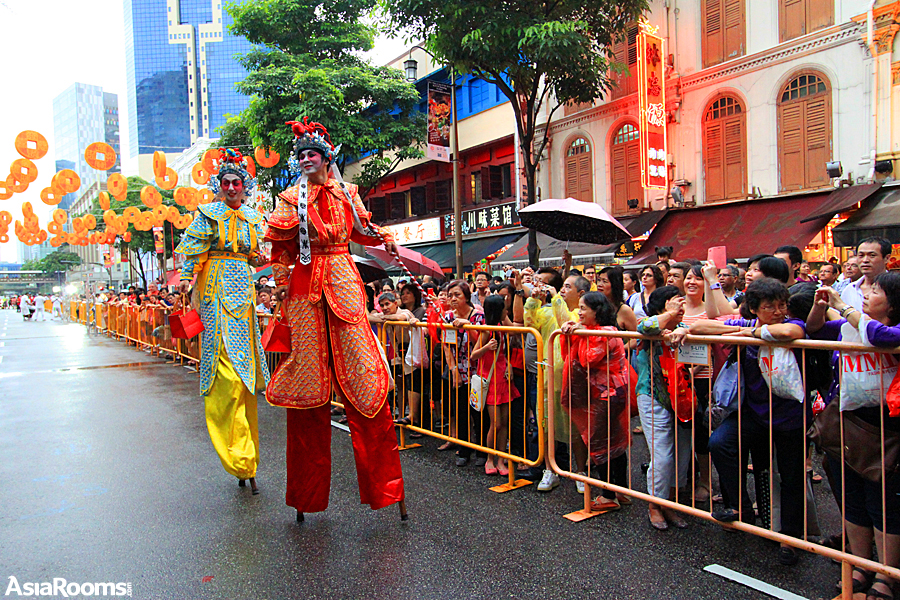
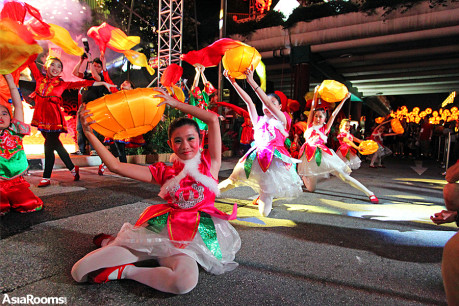
When you start seeing red across the island, that’s when you know Chinese New Year, one of the biggest holidays in Singapore, is approaching. Red paper lanterns with gold tassels swish in the breeze, and Chinese characters suggesting prosperity and joy, intricately cut out on red paper, are pasted on walls.
Chinese New Year marks the beginning of spring, and the 15-day celebration usually starts in late January or February. The exact dates vary from year to year, as it depends on the lunar calendar. However, the preparations usually begin a few days after Christmas. Department stores switch from playing Christmas carols to traditional Chinese New Year songs, and festivities must-haves start appearing on the shelves.
The Story Behind Chinese New Year
Legend has it that a mythical monster called ‘Nian’ would terrorise villagers on the first day of the spring. In an effort to appease ‘Nian’, people left food out for it, and clanged pots and pans in the hopes that loud noises would scare the creature away.
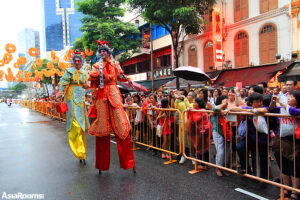
One day, villagers noticed ‘Nian’ avoiding a young child dressed in red. They realised it was afraid of the colour, thus adorned their homes with red items to deter it from seeking them. Villagers had a huge celebration after they successfully fought off the monster.
Over the year, these practices were adapted to become the Chinese New Year customs that are still carried out together, namely, feasting with family and friends, playing loud, joyful music, and wearing red or other brightly coloured clothes during the holiday.
Delicious Seasonal Goodies
Chinese New Year is a time to binge-eat, many Singaporeans would tell you. In the month leading up to it, items such as pineapple tarts (a flaky pastry topped with sweetened pineapple paste) or love letters (a super-thin wafer made from flour, eggs and coconut milk and rolled up to resemble a note) will be available at all bakeries and supermarkets across the island.
Most Singaporeans head down to Chinatown to stock up on these items, as the endless pop-up stores set up along the street during the season means the goodies are priced cheaply there (you can buy a jar of pineapple tarts for under $10, while they cost about $18 at brand name bakeries in malls).
The cheap prices translate into a huge crowd. To see Chinatown at its liveliest, visit during this period.
Singaporeans also have a ‘queue-culture’— meaning we have no problems waiting for hours for good food. This culture is apparent in hawker centres and coffee shops (tip: if you’re wandering the streets and unsure what to order, just join a queue and ask the person in from of you what he or she plans to order).
Chinese New Year means folks spend hours in the scorching sun waiting for their turn to purchase barbequed meat. Called ‘rou gan’ (row-gaan) or ‘bak kwa’ (bah-k-wah), this delicacy is minced meat marinated and grilled. It is a mix of sweet and savoury and just the right balance between a lightly charred skin and chewy inside. Though it is available all year round, the craze around the Chinese New Year period means hundreds would have taken up a spot outside the most well-loved outlets even before the stores open at 9am.
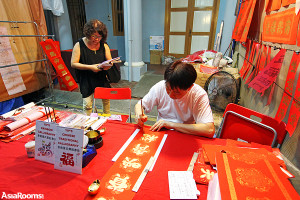
This year, I queued up for over an hour at a ‘boutique’ BBQ meat store to get my fix, and that is considered a short time to wait. If you’re in Singapore, do try a slice of this delicacy. Most places allow customers to buy a couple of slices instead of a whole box during low season. There are many outlets scattered around Singapore and several in Chinatown. It retails at $20 to $25 per half a kilogram.
Bright, Festive Decorations
Much like Christmas trees and stockings take centerstage when the holiday is coming up, and pumpkins are all around during Halloween, Chinese New Year decorations are a big deal. Everywhere, from stationery shops to specialty shops, will sell Chinese New Year related trinkets such as lanterns, paper cut-outs, and pussy willow flowers.
Many banks also give out free red packets that are beautifully designed. There is a custom of giving ‘lucky money’ in red packets (‘hong baos’) to the children or those who are still single. The more industrious ones will also create home-made decorations with these red packets.
Age-Old Customs
Other than giving out red packets, Chinese folks also carry Mandarin oranges with them during this period. Relatives and friends exchange pairs of the sweet oranges with auspicious phrases such as ‘Xing Nian Kuai Le’ (Happy New Year) or ‘Gong Xi Fa Cai’ (wealth and prosperity).
Wearing dark coloured clothes is a taboo, especially on the first few days of the holiday. It is preferred that one dons red clothes that are newly purchased during this time. As such, it is common to see many boutiques stock up on red or bright coloured items in the lead-up to the festivities.
If you’re travelling in Singapore during this time, put on a brightly coloured top and you’ll feel right at home.
One-of-a-Kind Experience
Imagine an endless sea of red and gold, upbeat music and smiling faces as you pound the streets of Singapore. During the Chinese New Year period, the happiness and excitement Singaporeans feel is infectious. It is a Chinese holiday, but most Singaporeans, regardless of race, enjoy the foods, sights and sounds that come along with it.
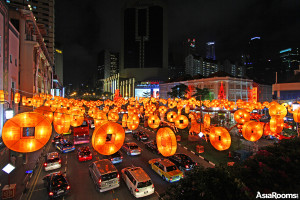
While Singapore may seem like a cool, urban business hub most of the year, she comes to life and reconnects with her roots during this big holiday. There will be an endless number of street performances, showcasing dancers decked in traditional costumes and singers belting out Chinese New Year songs.
It is best to visit a week before Chinese New Year, as merchants would have already set the festive cheer in full swing, but the holiday shopping has yet to go into madness. Visiting on the first few days of Chinese New Year may be a bit of a bummer, as many shops would be closed and Chinatown deserted.
If You Go
Chinese New Year at YourSingapore.com
Chinese New Year
Author Bio: Ling Xin is from Singapore, and likes cooking, reading and rehoming animals. A former print and online journalist, she now spends her time at asiarooms.com/en/community, where she travels and writes about her experiences. Also find her on twitter at @ohhellosailor.
- Top Things to Do with Kids in Kauai, Hawaii - January 13, 2024
- Cinnamon Bay Campgrounds, U.S. Virgin Islands - January 10, 2021
- Colorful Colonia del Sacramento, Uruguay - January 9, 2021
